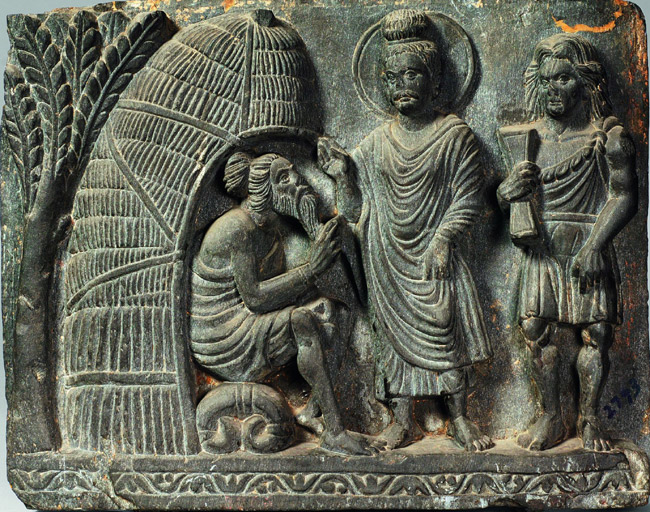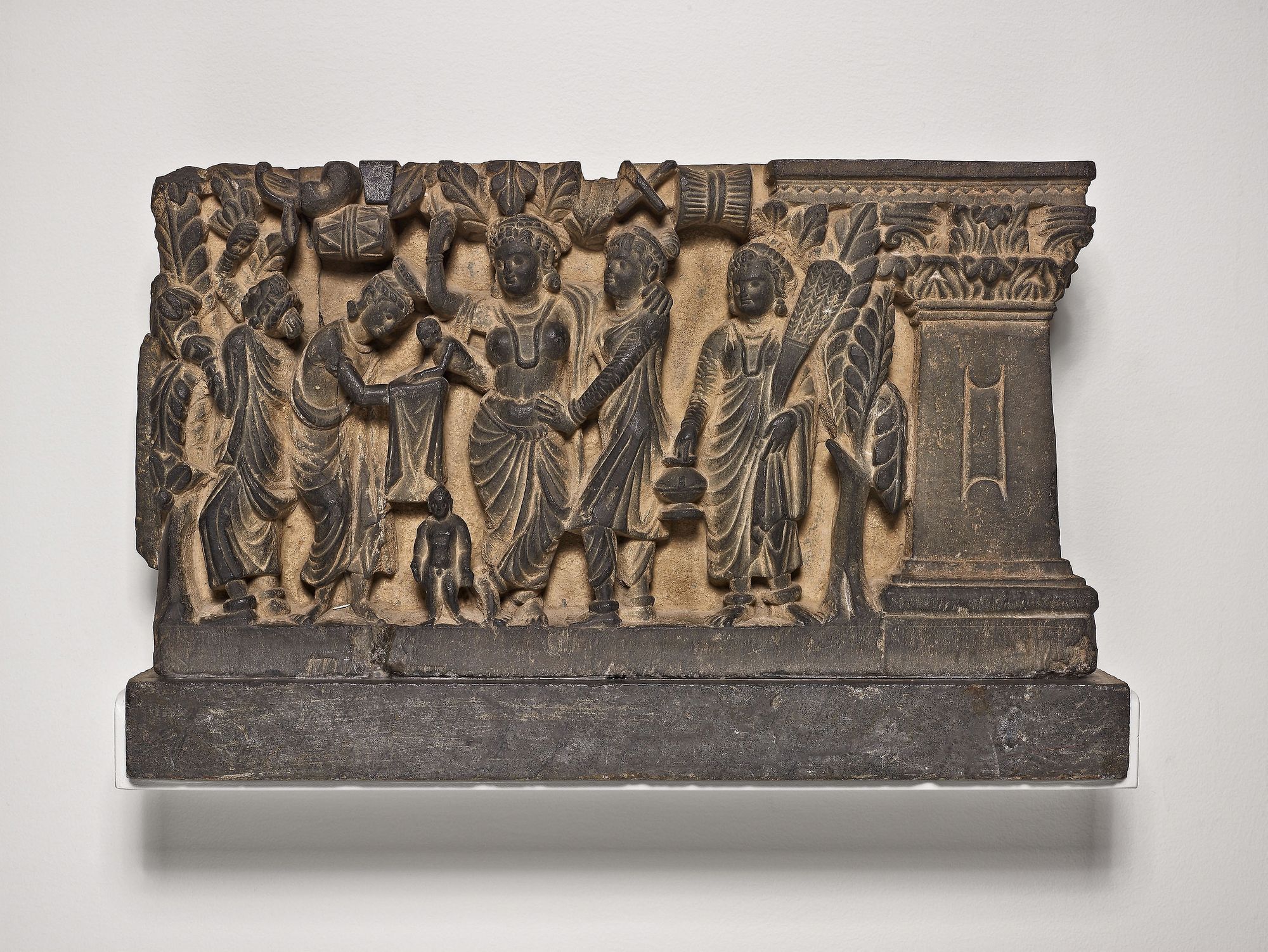
The Life of the Buddha Through Ancient Sculptures
“A picture is worth a thousand words.”
Thursday, May 7, 2020
Buddha Visits an Ascetic

buddha visits an ascetic
gandhara art, around 100 ad.
– buddha visits an ascetic. -
relief. schist, height 41 cm, width 50 cm, depth 7 cm.
origin unknown (formerly in the guides mess, mardan).
inv. no. pm 2893 (formerly 2066).
peshawar, museum.
– buddha visits an ascetic. -
relief. schist, height 41 cm, width 50 cm, depth 7 cm.
origin unknown (formerly in the guides mess, mardan).
inv. no. pm 2893 (formerly 2066).
peshawar, museum.
identifier
akg5818205
time period
topic
geography
person
technique
size
4961px × 4360px (61 mb)
42.0 cm × 36.9 cm @ 300 dpi
special formats
7795px × 6850px (153 mb) tiff
66.0 cm × 58.0 cm @ 300 dpi
66.0 cm × 58.0 cm @ 300 dpi
Buddha Born

Kushan period, about 2nd/3rd century
Pakistan, Present-day Khyber Pakhtunkhwa Province, ancient region of Gandhara
Pakistan, Present-day Khyber Pakhtunkhwa Province, ancient region of Gandhara
The Birth and the First Seven Steps of the Buddha
Origin: Gandhara
Date: 101 AD–300 AD
Medium: Phyllite
Credit Line: Samuel M. Nickerson Fund
Reference Number: 1923.315
Origin: Gandhara
Date: 101 AD–300 AD
Medium: Phyllite
Credit Line: Samuel M. Nickerson Fund
Reference Number: 1923.315
Buddha Kāśyapa Vajrapāṇi
Museum number
1961,0218.1
Description
Panel showing the Buddha performing a miracle before ascetics, perhaps the Kāśyapas. The haloed Buddha sits on a low seat in the centre of the panel, his over-robe on both shoulders; the neckline is in relief and somewhat plunging, the drapery folds in regularly curving and rounded ridges. He raises his right hand as if in abhaya with a seed or fruit (a mango) in…View moreabout description
School/style
Cultures/periods
Production date
2ndC-3rdC
Production place
Made in: Gandhara (Pakistan)
Asia: South Asia: Pakistan: Gandhara (Pakistan)
Findspot
Found/Acquired: Pakistan
Asia: South Asia: Pakistan
Materials
Technique
Dimensions
Diameter: 7.20 centimetres
Height: 29.50 centimetres
Width: 52 centimetres
Curator's comments
Zwalf 1996:
On this lively and well-balanced panel the rhythmically mannered stance of the ascetics and their and Vajrapāṇi's higher relief contrast with the much flatter and broader Buddha who, though hieratic, joins the action of the panel by turning to one side. The eyes of the ascetics in their often long faces are mainly narrow slits and correspond to their extremely slanting treatment on the Buddha's face.
Vajrapāṇi with a fly-whisk occurs in a number of instances.The fly-whisk is found on or attributed to twenty of the two hundred examples of Vajrapāṇi described in Santoro, 1979: 310-36. For Vajrapāṇi's Western mode of dress see BM 1939.0119.18.View lessabout curator's comments
On this lively and well-balanced panel the rhythmically mannered stance of the ascetics and their and Vajrapāṇi's higher relief contrast with the much flatter and broader Buddha who, though hieratic, joins the action of the panel by turning to one side. The eyes of the ascetics in their often long faces are mainly narrow slits and correspond to their extremely slanting treatment on the Buddha's face.
Vajrapāṇi with a fly-whisk occurs in a number of instances.The fly-whisk is found on or attributed to twenty of the two hundred examples of Vajrapāṇi described in Santoro, 1979: 310-36. For Vajrapāṇi's Western mode of dress see BM 1939.0119.18.View lessabout curator's comments
Bibliographic references
Location
Not on display
Condition
1.Grey schist, lightly broken and chipped.
2.Top and bottom flat; pitted sides flat and tapering.
3.Back with vertical chisel grooves.
4.Two round pinholes from front to back, one opening out to a much enlarged hole behind. 5.Paired vertical centre lines on bottom border.
2.Top and bottom flat; pitted sides flat and tapering.
3.Back with vertical chisel grooves.
4.Two round pinholes from front to back, one opening out to a much enlarged hole behind. 5.Paired vertical centre lines on bottom border.
Subjects
Associated names
Representation of: Buddha
Associated with: Kasyapa
Representation of: Vajrapāṇi
Acquisition name
Purchased from: Spink & Son Ltd
Funder name
Funded by: Brooke Sewell Permanent Fund
Acquisition date
1961
Department
Asia
Registration number
1961,0218.1
Subscribe to:
Posts (Atom)